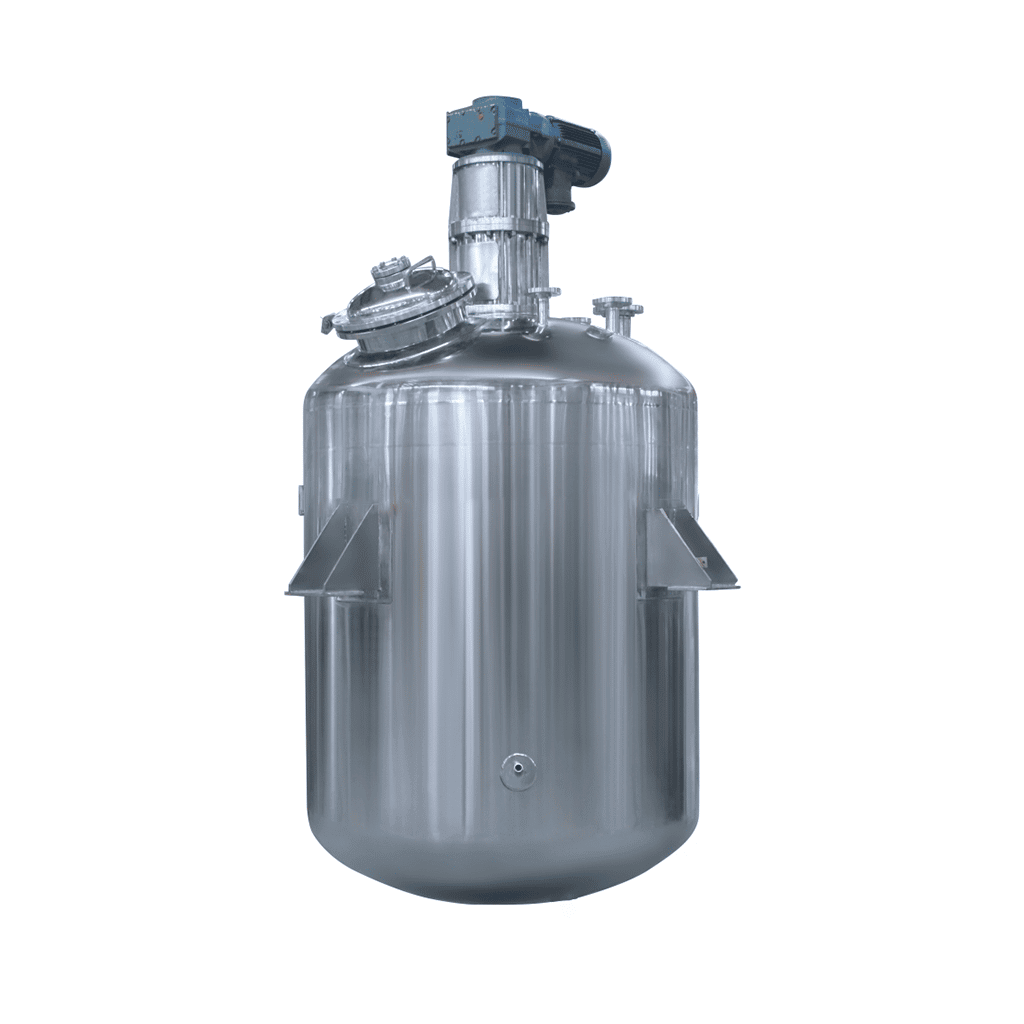
-24-1.jpg)
Stainless Steel Reactor
Stainless Steel Reactor: used in dairy products, sugar, beverages, and other fields
Material
stainless steel (316, 304)
Capacity (L)
10-10000+
Mixing system
anchor, paddle, frame and others
Heating system
electric heating, oil heating and others
A stainless steel reactor is a stainless steel container equipment. The stainless steel reactor consists of a kettle body, a kettle lid, a stirrer, a jacket, a bracket, a transmission device, a shaft seal device, etc. Materials and openings can be made according to user needs and process requirements. Stainless steel reactors are mainly used for stirring, homogenizing, and mixing storage of dairy products, sugar, beverages, food, and various pharmaceuticals.
Request a quoteThe high pressure stainless steel reactor can only operate with a sufficient heat supply, which involves its heating source – thermal oil. High pressure stainless steel reactor thermal oil is also called heat transfer oil. Its formal name is heat carrier oil, so it is also called thermal oil, thermal kerosene, etc. Thermal oil is a heat transfer medium that heats evenly and controls the temperature accurately. It generates high temperatures under low vapor pressure, has a good heat transfer effect, saves energy, and is convenient for transportation and operation.
-24-1024x1024.jpg)
Characteristics of thermal oil for high pressure stainless steel reactor
The thermal oil furnace has high temperature, low pressure, accurate temperature control, and high thermal energy utilization. Therefore, the high pressure stainless steel reactor can achieve high operating temperatures under atmospheric conditions. The heating surface adopts densely packed round coil tubes, and the heating surface is adequately arranged to reduce the heat load on the surface of the tube and make the use of thermal oil safer. It can greatly reduce the working pressure and safety requirements of the high-temperature heating system, and improve the reliability of the system and the high pressure stainless steel reactor. It can meet the process requirements of heating and cooling at different temperatures in a wide temperature range, and can also use the same heat transfer oil in the same system to simultaneously achieve the process requirements of high-temperature heating and low-temperature cooling. This reduces system and operational complexity.
Thermal oil for high pressure stainless steel reactors omits water treatment systems and equipment, improves the thermal efficiency of the system, and reduces the maintenance workload of high pressure stainless steel reactors and pipelines. This reduces the initial investment and operating costs of the heating system. If the system leaks due to an accident, the thermal fluid may burn when exposed to an open flame. This is an issue with thermal oil systems compared to water vapor systems. However, when there is no leakage in the high pressure stainless steel reactor since the thermal oil system works under low-pressure conditions, its operation safety is higher than that of the water and steam system.
Precautions for heat transfer oil in high pressure stainless steel reactor
1. It is strictly forbidden to leak water, acid, alkali, and other impurities into the heat transfer oil of the high pressure stainless steel reactor during use.
2. When using high pressure stainless steel reactor thermal oil equipment for the first time, impurities and rust particles brought during the installation process must be removed, otherwise the heat transfer efficiency and the service life of the thermal oil will be affected.
3. High-temperature-resistant gaskets should be used in the heating circulation system to prevent hot oil leakage.
4. When using thermal oil, you must first pay attention to dehydration and light components. Especially when using it for the first time, the temperature rise rate should not be too fast. When the temperature rises to 105-120℃, it should stay for a period of time (the length of the residence time depends on the actual situation). When the temperature rises to 180-200℃, it should stay for a while to remove a small amount of light components.
5. If the heat transfer oil of the high pressure stainless steel reactor kettle changes after long-term use (discoloration, failure to meet the original temperature rise standard), the heating should be stopped immediately, a sample should be taken for a hearing test, and then a decision should be made whether to increase the oil volume or change the oil again.
Heat is the core of the operation of a high pressure stainless steel reactor, and the insulation equipment has become the “heart” of the high pressure stainless steel reactor. In order to avoid the impact of high and low heat source supply on product quality, high pressure stainless steel reactor insulation equipment came into being at the beginning of operation. The high pressure stainless steel reactor uses heat transfer oil as the carrier, and the heat carrier is forced to circulate in the liquid phase through the circulating oil pump. The heat is transferred to the high pressure stainless steel reactor and then returned to the furnace for reheating.




